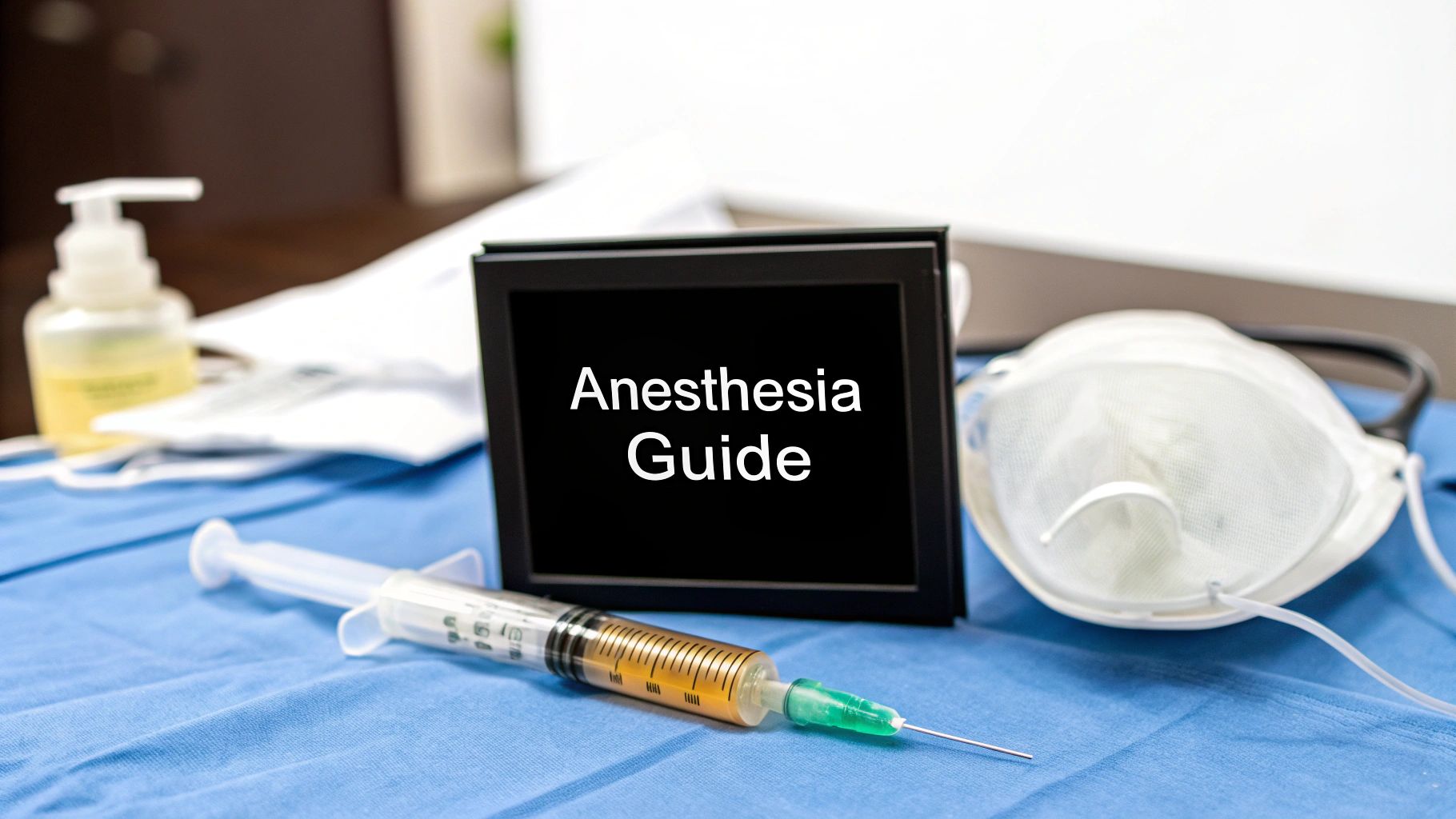
October 12, 2025
Anesthesia Types for Surgery A Patient's Guide
Discover the main anesthesia types for surgery. This guide explains general, regional, local, and sedation to help you prepare for your procedure.
Aug 27, 2025

Choosing between saline and silicone breast implants can be a complex decision influenced by factors such as appearance, feel, safety, cost, and personal preferences. This guide explores the main differences, benefits, and risks of each implant type to help you make an informed choice aligned with your aesthetic goals and lifestyle.
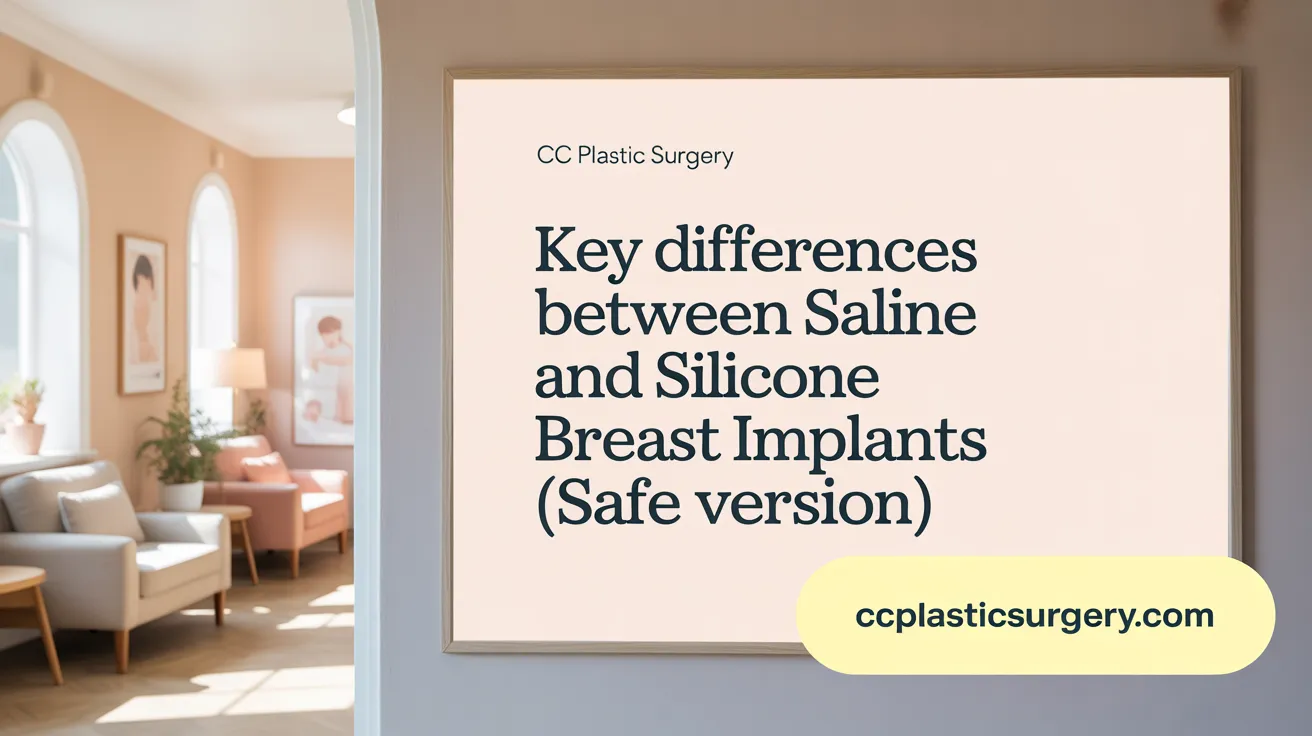
Saline breast implants feature a silicone outer shell filled with sterile salt water. During surgery, they are inserted empty and filled afterward, which allows for smaller incisions and easier size adjustments. In contrast, silicone implants come prefilled with a cohesive silicone gel, designed to resemble natural breast tissue in weight and feel. Recent improvements have made silicone gels more durable and less prone to leakage, often called 'gummy bear' implants due to their firmness and shape.
Silicone implants are favored for their natural look and softness. They tend to better mimic natural breasts, especially for women with less natural tissue, and are less likely to ripple or fold visibly. Saline implants usually appear firmer and rounder, with a higher chance of rippling or folding, especially in thinner-skinned patients. They can be overfilled to reduce rippling but may still feel less natural.
Women seeking augmentation must be at least 18 years old for saline implants, while silicone implants are approved for those aged 22 and older. Silicone implants received FDA approval in 2006 after extensive safety studies, confirming they are as safe as saline options. Both require ongoing monitoring to check for rupture, with silicone needing MRI scans every few years.
Because silicone implants are prefilled, they require slightly larger incisions, typically around the areola or below the breast fold, to insert the implant. Saline implants are inserted empty and filled during surgery through smaller incisions, which can be placed in various locations like around the areola, under the breast, or through the belly button. This flexibility often results in smaller scars with saline.
A rupture in saline implants is immediately noticeable as the breast deflates, causing a sudden change in shape, and the body safely absorbs the saline. Silicone implant ruptures are often silent, with leaks trapped in scar tissue, potentially leading to shape changes or discomfort over time. Detecting silicone ruptures typically requires MRI scans, whereas saline ruptures are visually obvious and easier to diagnose.
| Aspect | Saline Implants | Silicone Implants | Notes |
|---|---|---|---|
| Composition | Shell filled with sterile salt water | Shell filled with silicone gel | |
| Feel | Firmer, rounder, more prone to rippling | Softer, more natural, less rippling | |
| Incision size | Smaller; filled during surgery | Larger; prefilled | |
| Age approval | 18+ | 22+ | |
| Rupture detection | Visible deflation | MRI recommended | |
| Cost | Lower | Higher |
Both options are considered safe, but individual needs, aesthetic goals, and risk tolerance influence the choice. Consulting with a qualified surgeon is critical to selecting the best implant for each person.
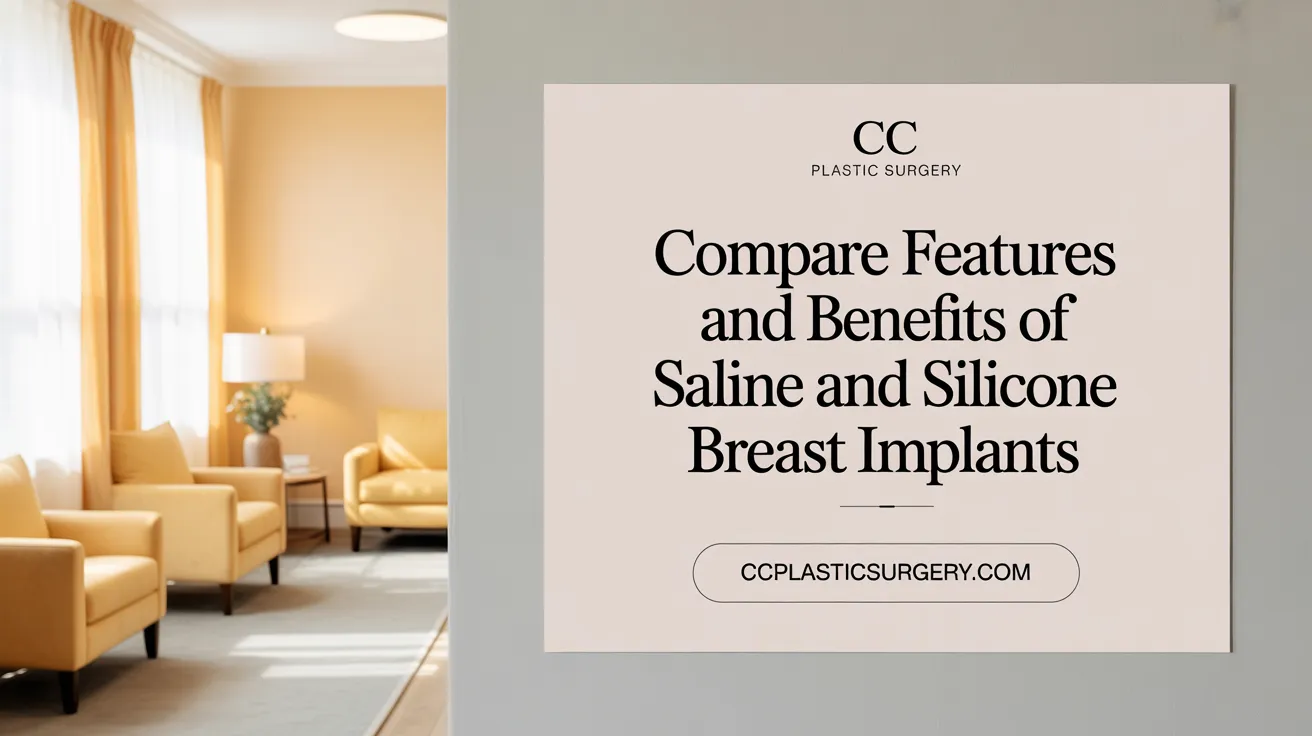
Saline breast implants are filled with sterile salt water, which makes them adjustable during surgery. They are inserted empty and filled afterward through a small incision, minimizing scar size. This allows for precise sizing and easier removal or replacement if needed. Saline implants are suitable for women aged 18 and older, making them accessible to younger patients who want breast augmentation.
However, saline implants tend to feel less natural than silicone. They may also ripple or fold under the skin, especially in women with thinner tissue. Despite these drawbacks, they are generally more affordable and easier to detect if ruptured. When a saline implant leaks, the implant deflates, and the saline is safely absorbed by the body, making rupture detection straightforward.
Silicone breast implants, on the other hand, are filled with a cohesive silicone gel designed to mimic natural breast tissue in both feel and appearance. Modern silicone implants are available to women aged 22 and older for cosmetic purposes but can be used at any age for reconstruction.
These implants tend to provide a softer, more natural look and feel, especially for women with less natural tissue. They are less prone to rippling and are preferred for their realistic contour. Silicone ruptures are often silent, meaning they might not be immediately noticeable. Monitoring for rupture requires regular imaging, such as MRI scans, typically recommended every 2-3 years after the first 5-6 years.
Both implants carry risks, including infection, capsular contracture, sensation changes, and leakage. A rare but serious condition associated with textured silicone implants is breast implant-associated anaplastic large cell lymphoma (BIA-ALCL), which is very rare.
Saline implants can be inserted through smaller incisions because they are deflated at the time of surgery and filled afterward, optimizing for minimal scarring. Silicone implants require larger incisions since they are pre-filled and placed into the breast cavity intact.
Silicone implants are generally preferred for their natural appearance and soft feel. They better replicate the weight and suppleness of natural breasts, making them a popular choice for women seeking realistic results.
Saline implants are approved for women 18 years and older, whereas silicone implants are available to women 22 and older for cosmetic procedures. Silicone can be safely used at any age for breast reconstruction, thanks to extensive safety research.
Advancements in silicone technology have extended implant lifespan. Silicone implants typically last about 15-20 years, thanks to improved cohesiveness. Saline implants usually last around 10 years before needing replacement, although this can vary based on individual circumstances.
Women with minimal natural tissue or those seeking larger augmentation may benefit from silicone implants for a more natural feel and reduced rippling. Conversely, saline implants may be suitable for women who prefer smaller incisions and easier adjustments. The choice depends on personal preferences, body shape, and desired results, with consultation from a qualified plastic surgeon essential.
| Aspect | Saline Implants | Silicone Implants | Additional Details |
|---|---|---|---|
| Filling Material | Sterile salt water | Cohesive silicone gel | Designed to mimic natural tissue |
| Age Approval | 18+ | 22+ | For cosmetic purposes |
| Feel | Firmer, less natural | Softer, more natural | Preferred for natural look |
| Rupture Detection | Immediate deflation | Silent, requires MRI | Monitoring essential |
| Longevity | ~10 years | 15-20 years | Based on technological improvements |
| Incision Size | Smaller, filled post-insertion | Larger, pre-filled | Surgical considerations |
| Cost | Less expensive | More costly | Around $1,000 difference |
Choosing between the two options requires careful assessment of personal goals, body type, and lifestyle. Consulting with a qualified, board-certified plastic surgeon ensures the best decision aligned with individual needs.
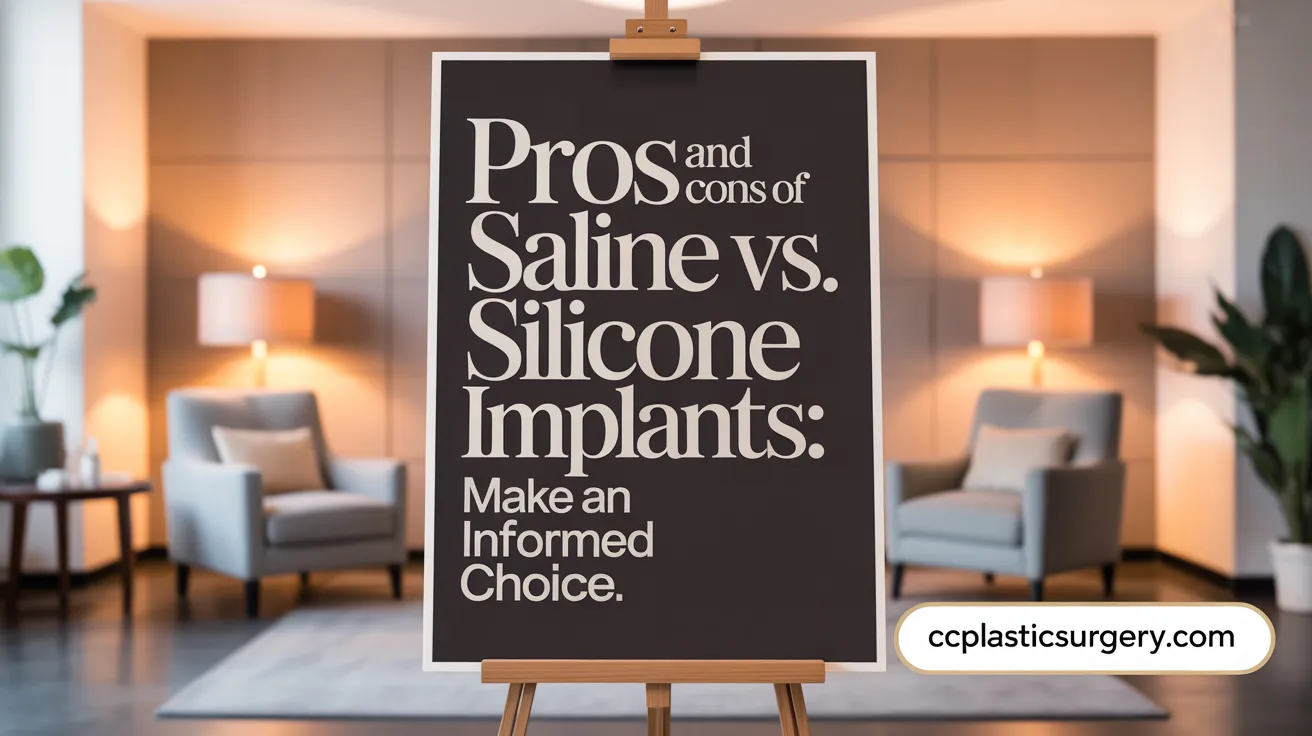
When considering breast implants, understanding the differences between saline and silicone options can help you make an informed decision. Saline implants are generally more affordable, with lower costs making them appealing to those on a budget. They are filled with sterile salt water after placement, which allows for smaller surgical incisions. If a saline implant ruptures, it deflates quickly and visibly, providing an immediate indication that something is wrong. This makes rupture detection straightforward. Additionally, saline implants are easier to remove or replace if necessary.
However, saline implants tend to feel firmer and are more prone to rippling or wrinkling, especially in women with thinner natural tissue. They may also produce a less natural appearance, with a rounder, sometimes less soft feel. Because of these factors, some women find that saline implants do not mimic natural breast tissue as closely.
In contrast, silicone implants are praised for their realistic appearance and softer, more natural feel. Made of a silicone rubber shell filled with cohesive silicone gel—sometimes called 'gummy bear' implants—they more accurately resemble natural breasts in both look and touch. Silicone implants tend to be lighter and less likely to ripple, making them a preferred choice for women desiring a more natural look.
The main drawback with silicone implants is that their rupture can be silent initially, meaning there are often no obvious signs. Detecting a rupture requires routine MRI scans or ultrasounds, typically every few years, which can increase long-term monitoring costs. When ruptured, silicone gel can remain trapped within scar tissue, and the visibility of rupture symptoms may be delayed.
Cost is another consideration. Silicone implants are usually more expensive—about $1,000 more than saline—and initial costs include regular MRI scans to monitor safety. Despite these expenses, many women prefer silicone for its more natural feel and appearance.
Both types of implants are safe and FDA-approved for women over certain ages, with saline approved from age 18 and silicone from age 22. The choice between them often depends on budget, desired aesthetic outcome, body type, and willingness to undergo ongoing monitoring.
Ultimately, consulting with a qualified, board-certified plastic surgeon can help determine the best option based on your individual needs, preferences, and lifestyle. Understanding these differences ensures you can choose the implant type that aligns best with your personal goals and concerns.

Saline and silicone breast implants are generally safe options for breast augmentation or reconstruction, but they come with specific risks that women should be aware of. Common complications include capsular contracture, where scar tissue tightens around the implant, causing hardness or discomfort. Infection and changes in nipple or breast sensation are also possible post-surgery.
One of the most significant concerns is implant rupture. Saline implant ruptures are usually immediately visible because the implant deflates, and the body safely absorbs the saline solution. Silicone implant ruptures, on the other hand, can be silent, meaning there may be no obvious signs initially. Silicone gel can stay trapped within scar tissue, though it might migrate outside the breast over time.
There is a very low but notable risk of developing breast implant-associated anaplastic large cell lymphoma (BIA-ALCL), a rare type of immune system cancer linked primarily to textured implants. While this condition is not breast cancer, it may require severe treatments like chemotherapy.
Both implant types are FDA-approved and considered safe, but ongoing research continues to monitor potential long-term effects. Women are encouraged to undergo regular imaging, such as MRI or ultrasound, especially for silicone implants, to detect silent ruptures early. Overall, understanding these risks helps women make informed decisions and engage in appropriate postoperative monitoring.

Choosing the right breast implant involves evaluating your personal preferences, lifestyle, and aesthetic goals. Silicone implants are often favored because they provide a more natural look and feel, resembling real breast tissue, especially for women with less natural tissue. Saline implants are more affordable, with smaller incisions and easier detection of ruptures, which cause the breast to deflate visibly.
Safety profiles for both implant types are comparable, but silicone ruptures can be silent, making MRI scans necessary for detection. Saline ruptures, on the other hand, are immediately noticeable as the saline solution is absorbed safely by the body.
Your daily activities, long-term maintenance, and comfort should also influence your choice. For example, if minimizing visible rippling and ripples is important, silicone may be preferable. Consulting with a qualified, board-certified plastic surgeon is crucial to discuss personalized factors such as body type, goals, and potential risks. They can help determine the best option aligned with your expectations and ensure a safe, satisfying outcome.
Ultimately, making an informed decision involves weighing aesthetics, safety, cost, and lifestyle factors, with professional guidance aiding in selecting the most suitable implant type.
Both saline and silicone breast implants offer unique advantages and considerations. Understanding the differences in feel, appearance, safety, and cost, alongside personal goals and anatomy, is essential for a gratifying outcome. Consulting with a board-certified plastic surgeon to evaluate your individual needs will guide you toward the implant type best suited to your lifestyle and aesthetic aspirations. Whether prioritizing a natural look or valuing rupture detection ease, informed decisions empower you to achieve confidence and satisfaction in your breast augmentation journey.

October 12, 2025
Discover the main anesthesia types for surgery. This guide explains general, regional, local, and sedation to help you prepare for your procedure.
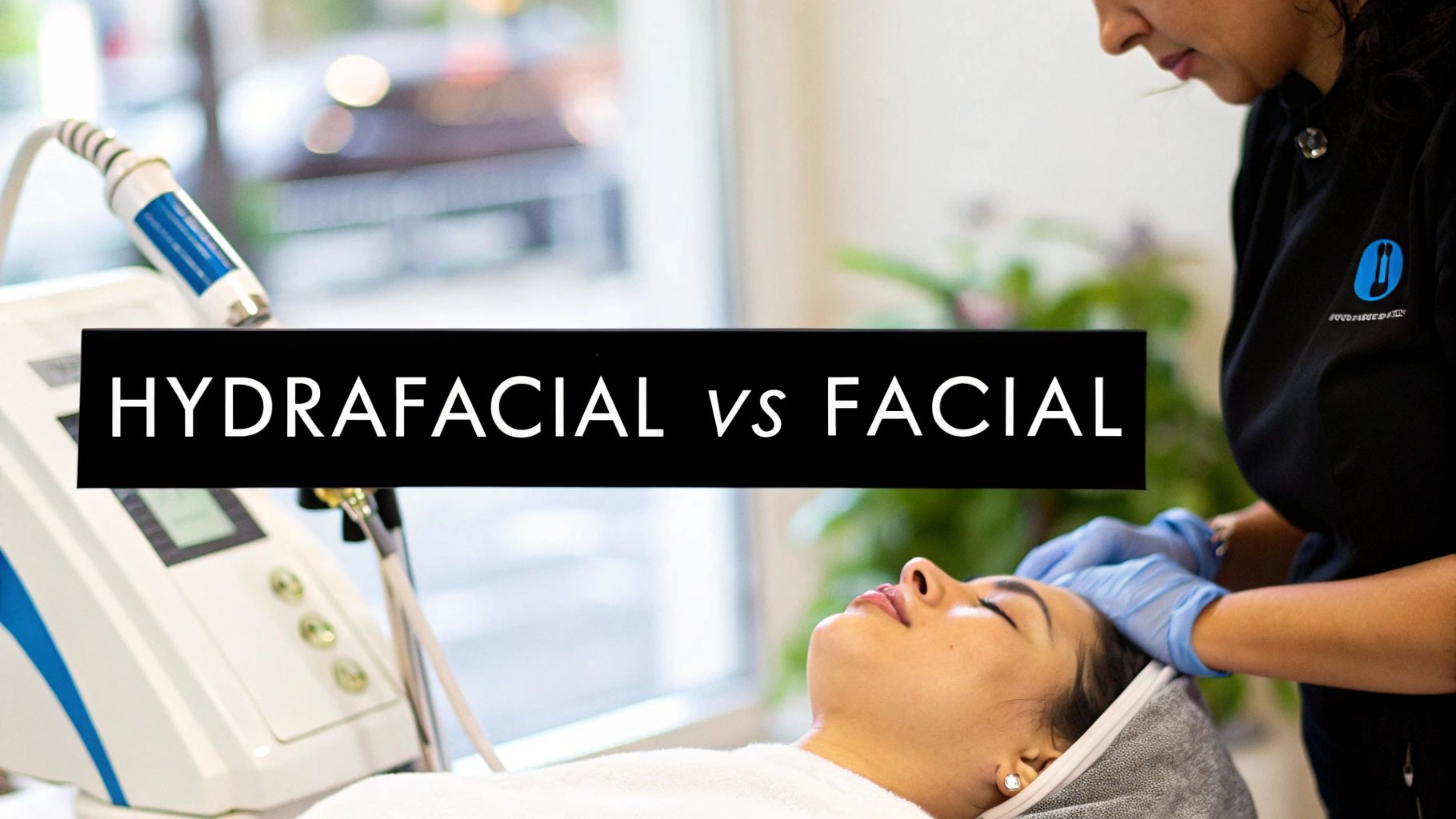
October 11, 2025
Learn the key differences between hydrafacial vs regular facial to choose the right treatment for glowing, healthy skin. Read our expert guide now!

October 10, 2025
Explore the best treatments for sagging skin, from non-invasive to surgical options. Find the perfect solution to restore your youthful appearance.